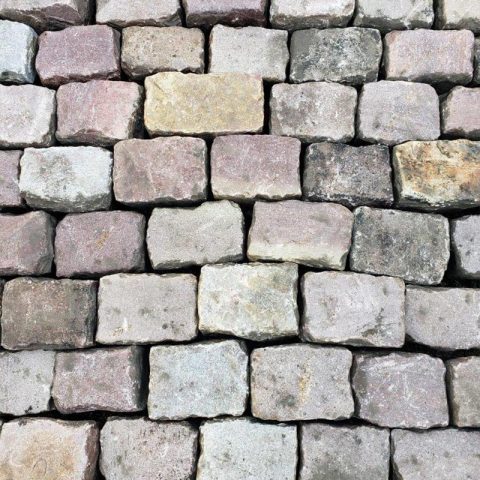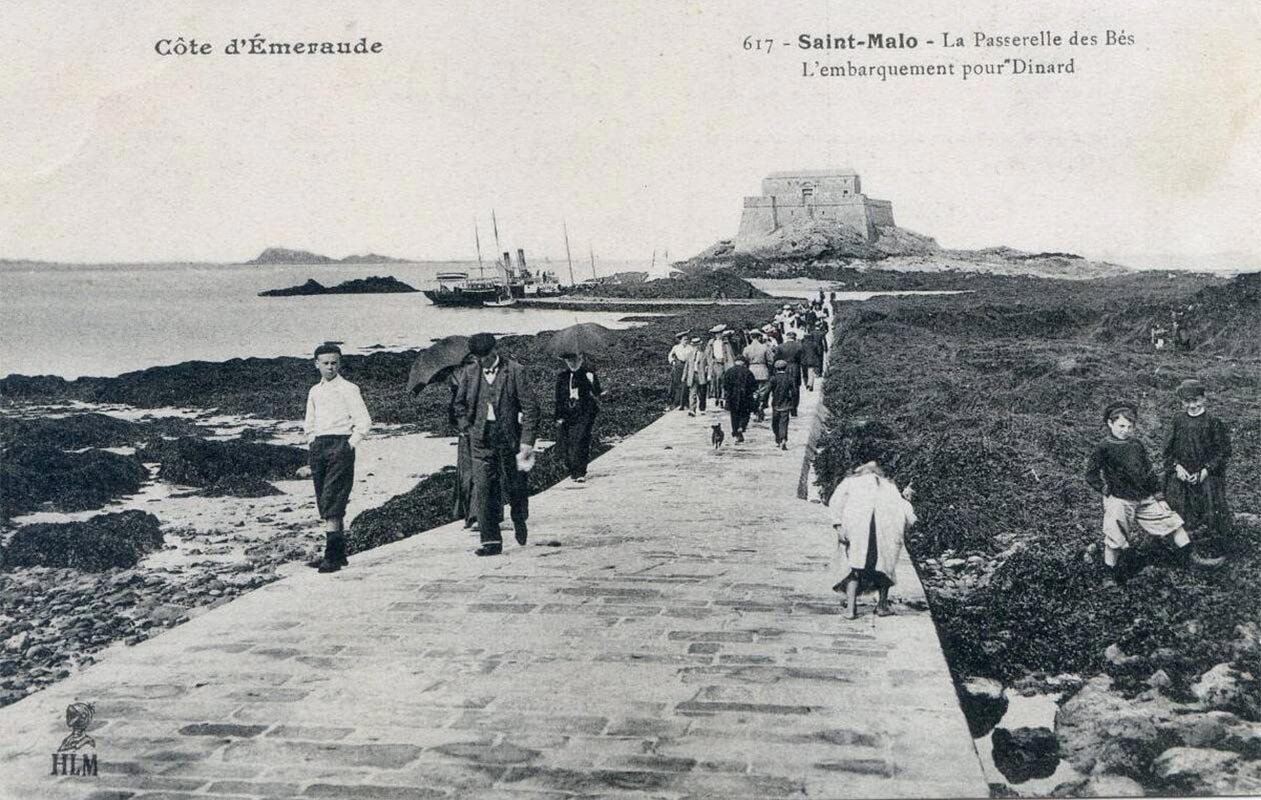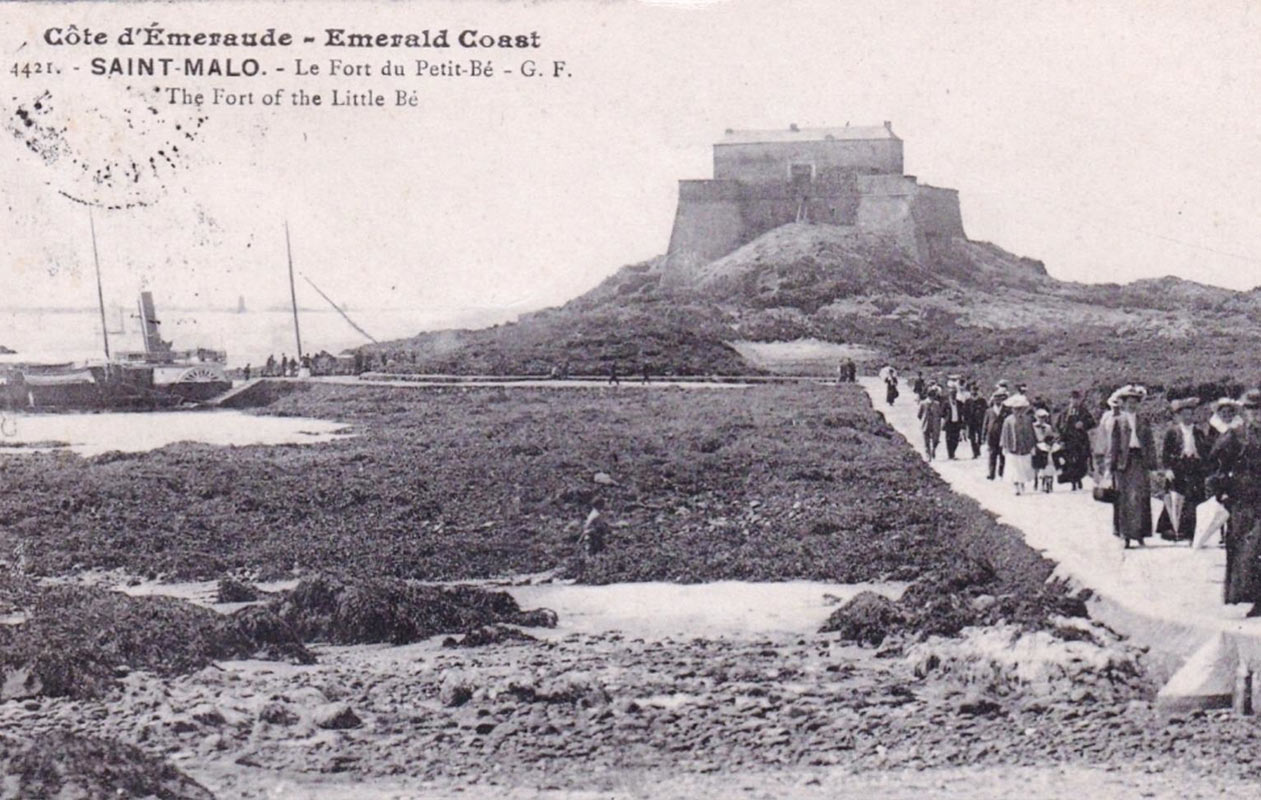Tidal landscaping, using cobblestones …. underwater ? What sort of nonsense could this be ? But no, discover these underwater cobbled access lanes to this Saint-Malo island : Fort Le Petit Bé (Emerald Coast, The Fort of the Little Bé). Read further and view our photos taken at low tide of the splendid antique cobblestones still in-situ and in use long after their military purpose became redundant.
The last garrisons to have used the tidal roadway to supply the off-shore fort were the occupying Nazi forces from 1940 to 1944. However, the fort was built in the late 17th century as part of the strategically important city of Saint-Malo’s coastal defences against the English (of course). King Louis XIV commanded the military architect Vauban to design and build fortifications. When completed, the fort was armed with cannons and mortars, with a permanent garrison. To supply the fort at low tide, an access road was built from the town across the sands, which then slopes up towards the fort. By all accounts, it was built in the late 18th / early 19th century using the same cobblestone and flagstone stone types as found in the streets and ramparts of the city, mostly local granite.
Antique cobbles of the Fort du Petit Bé
Similar antique Truly Reclaimed cobblestones are sourced and stocked at BCA’s depots. We aren’t expecting clients to build underwater roadways with them. However, they are marketed by BCA both locally and for export (despite their heavy weight) for the most attractive and durable landscaping and historic courtyard and street projects across Europe and even for export. BCA’s reclaimed granite, gritstone and limestone setts are ideal for this and are particularly attractive too. They are available for most authentic of projects built to last centuries, just like these access lanes to Le Petit Bé island fortress.
Fort du Petit Bé at low tide
What better durable material could there be to withstand the waves and shifting sands over the years? Antique reclaimed cobbles of course.
The roadway even branches off to a small quayside that is exposed and accessible only at low tide, thereby enabling small craft to sneak in supplies when no big attacking warship could possibly approach the island. Later this low-water quayside was used for disembarking tourists from across the bay linking Dinard to Saint-Malo even at low tide. The cobblestone road was considered essential for ladies to keep their long dresses dry. See the old postcard photos.
















